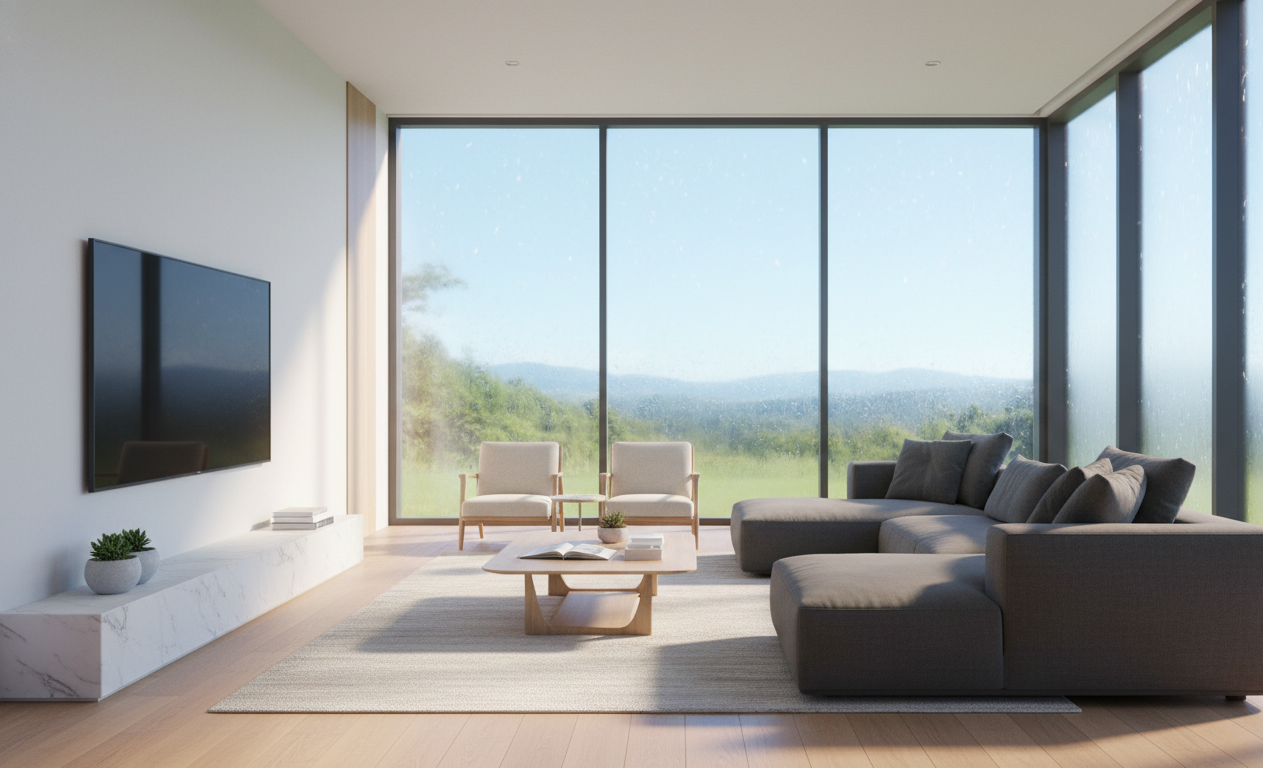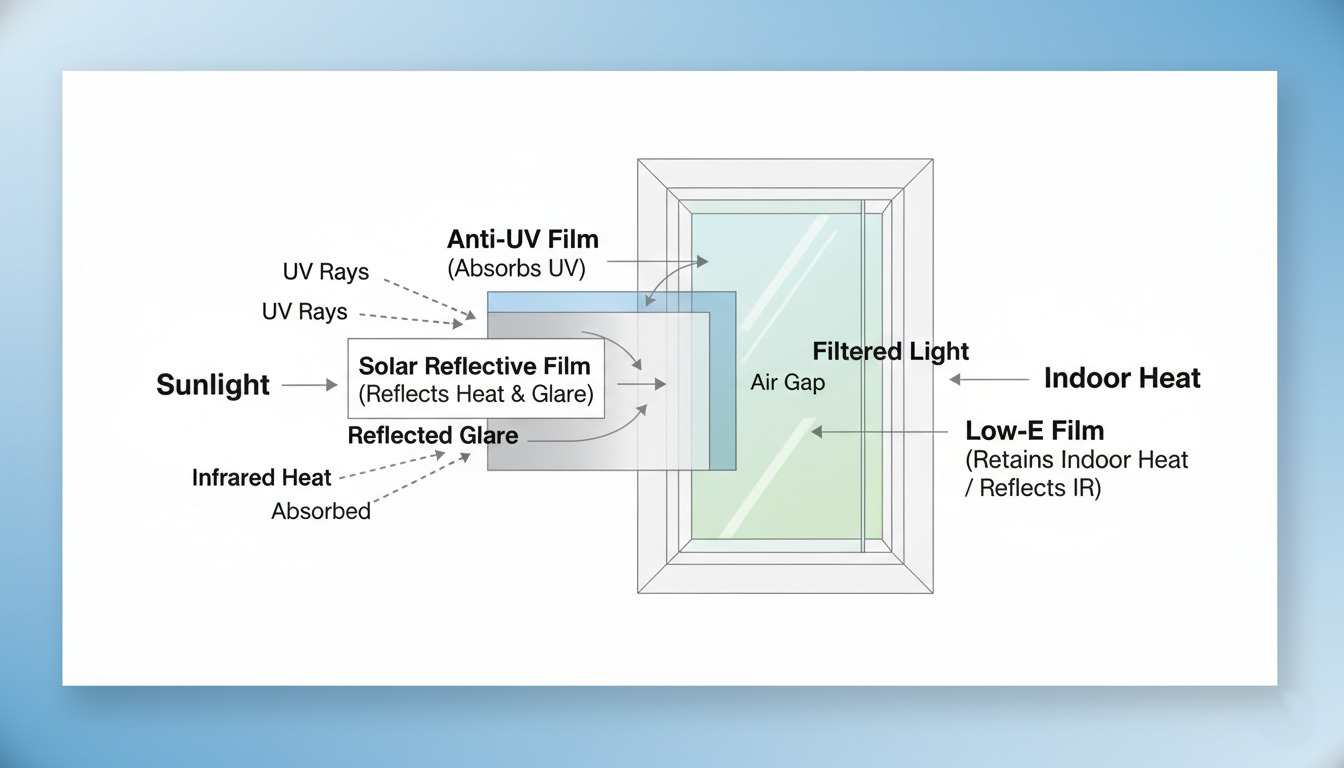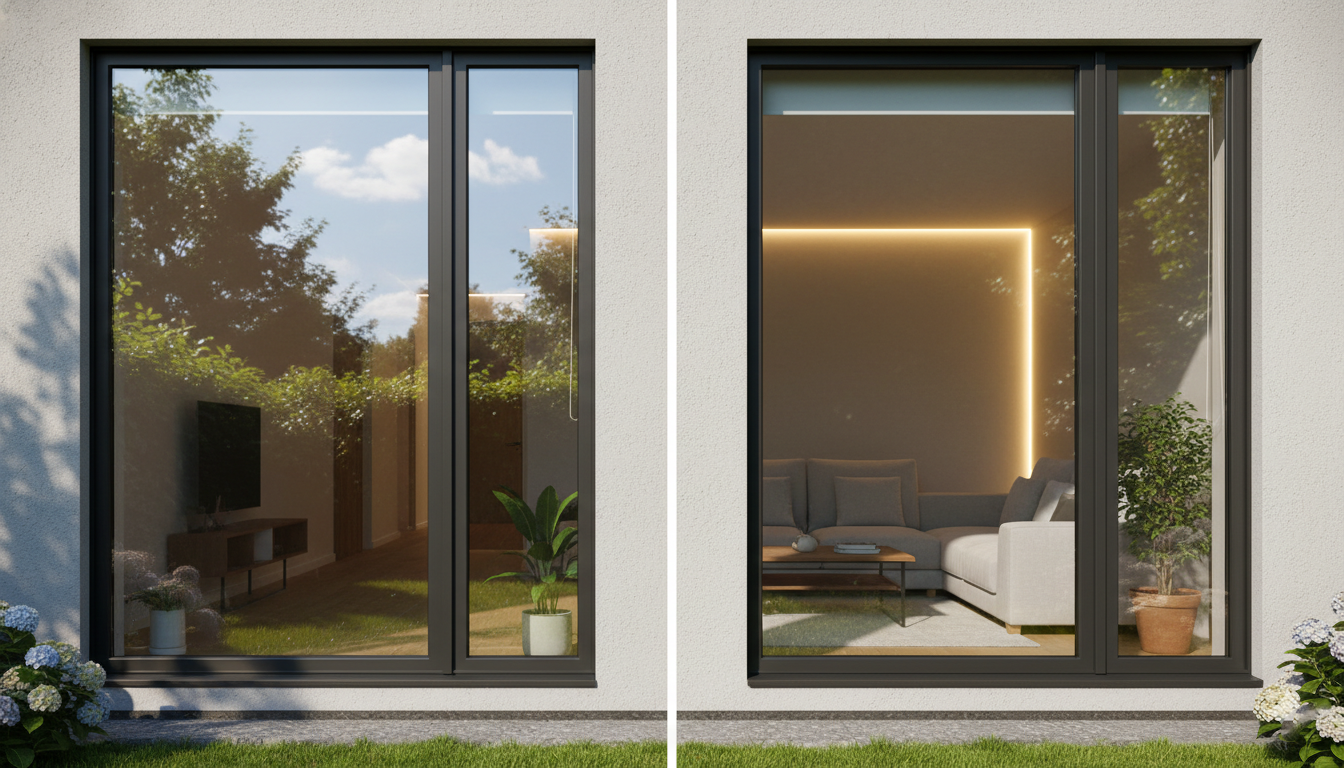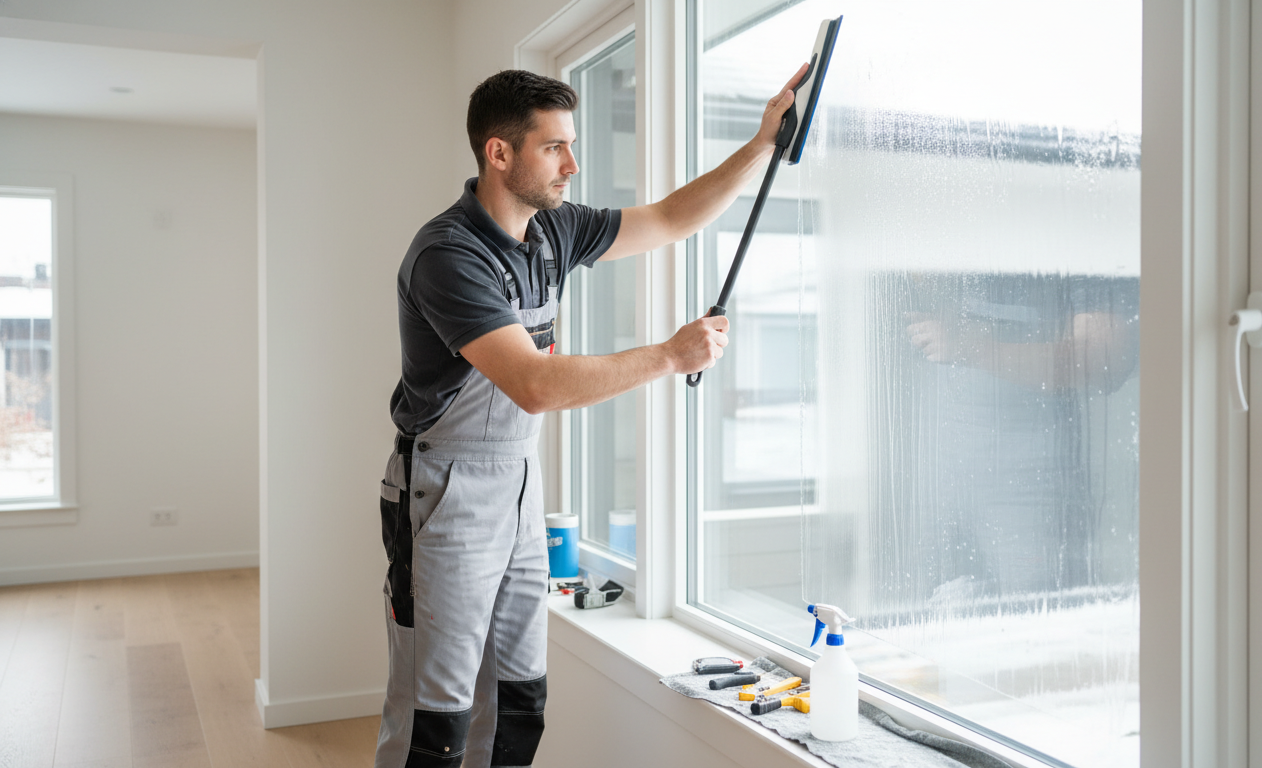
Too much sunlight can make any home feel hot and uncomfortable. Glare on screens, faded furniture, and uneven temperatures are all common problems caused by excessive heat and bright light.
Window films offer an easy and affordable solution. They help control the amount of sunlight that enters your home while maintaining brightness and clear views. The result is a cooler, more comfortable living space without the heavy use of air conditioning.
Modern films do more than just block heat. They also protect your interiors from harmful UV rays and reduce glare that strains your eyes. With so many film options available, choosing the right one can seem confusing.
This guide will help homeowners understand how window films work, why heat and glare control matter, and how to select the perfect film for lasting comfort and energy savings.
3M offers a selection of window films designed to tackle heat and glare while preserving comfort and visibility. The 3M Sun Control Window Film Ceramic Architectural Series uses nano-ceramic technology to reduce solar heat and minimize glare without darkening windows ideal for rooms that get a lot of direct sunlight.
The 3M Sun Control Window Film Prestige Series applies multilayer spectrally selective film that blocks much of the infrared and UV radiation while maintaining brightness and clarity indoors.
For buildings needing energy efficiency along with glare control, 3M All Season (Low-E) Window Film adds thermal insulation, helping manage indoor temperature throughout the year and reduce reliance on air conditioning or heating.
These films help create comfortable indoor environments by cutting heat, lowering glare, protecting furnishings from UV damage, and keeping natural light all without sacrificing signal connectivity or requiring heavy tint.
Understand the science behind window films and how they control sunlight, temperature, and visibility.

Window films are thin, transparent layers applied to the inside surface of glass. They are made of multiple materials that work together to reflect, absorb, or filter sunlight.
Each layer plays a specific role. Some reduce glare, others block infrared heat, while others filter ultraviolet light. Together, they improve indoor comfort without changing how your windows look.
UV rays fade furniture and floors over time. Window films block up to 99 percent of these rays, protecting interiors from damage.
They also reduce infrared energy, which is the main source of solar heat. This keeps indoor spaces cooler and helps reduce strain on air conditioning systems.
Glare from direct sunlight can make it hard to read, watch TV, or work on screens. Window films help by diffusing bright light while keeping natural brightness.
They make rooms easier on the eyes, maintaining visibility and comfort throughout the day.
Learn how excess sunlight affects comfort, energy, and interior design.
When sunlight enters through untreated windows, it quickly heats up a room. The result is uneven temperatures, uncomfortable hot spots, and eye strain from glare.
Window films help balance these conditions by controlling how much light and heat pass through. This creates a more even indoor climate and allows you to enjoy every corner of your home comfortably.
Uncontrolled heat gain forces air conditioners to work harder, increasing power bills. By reflecting solar heat, window films help lower indoor temperatures and reduce energy use.
Many homeowners notice up to a 30 percent decrease in cooling costs after installation. These savings add up over time and make window films a smart long-term investment.
Sunlight can cause fading and discoloration on furniture, flooring, and artwork. The UV-blocking feature of window films prevents this damage.
Your interiors stay brighter and newer for longer, keeping your home beautiful and protected throughout the year.
Follow this simple guide to find the best film for your needs and home design.

Different homes face different sunlight challenges. If your home is in a hot or sunny region, look for films with high solar rejection ratings. These films reduce heat buildup and keep interiors cooler.
For shaded or mild climates, a lighter film may be enough. It will control glare and UV rays without reducing natural light too much. South- and west-facing windows usually need stronger heat control than those facing north or east.
Reflective films are highly effective at blocking heat and glare. They also add daytime privacy by reflecting the outside view.
Non-reflective films are ideal if you prefer a natural look and want to keep your view clear. They still provide UV protection and help maintain comfortable indoor temperatures.
Each home has unique design preferences. Choose film tones and shades that blend with your interiors. Neutral or ceramic films are great choices for homeowners who value style as much as comfort.
Balancing appearance, performance, and privacy helps you achieve the perfect combination of comfort and design harmony.
Discover the most effective window film technologies for comfort and efficiency.
Solar control films are among the most popular choices for homeowners in warm climates. They are designed to reflect and absorb sunlight before it enters your home.
These films reduce heat buildup, glare, and fading without blocking too much natural light. They are especially useful for rooms with large windows or areas that receive strong afternoon sun.
Ceramic window films use advanced nanotechnology to block heat and UV rays while staying nearly invisible. They do not contain metal, so they do not interfere with Wi-Fi or phone signals.
Homeowners prefer ceramic films because they maintain natural brightness and clear views. They also perform well in both hot and mild climates, making them a versatile option.
Dual-reflective films offer two performance levels in one product. The exterior side is reflective to reject heat and sunlight, while the interior side has a softer, less reflective finish for night visibility.
These films strike a balance between energy efficiency, privacy, and indoor comfort. They are an excellent choice for homeowners seeking all-around performance.
Weigh the pros and cons of installing window film yourself or hiring an expert.

Installing window film on your own can be a cost-saving option for smaller projects. It works best on flat, single-pane windows that are easy to access.
DIY kits are available with pre-cut film and simple tools. To get good results, you’ll need patience, a clean workspace, and careful attention to detail. Even small dust particles or trapped air can cause bubbles that affect the final look.
Professional installation ensures a precise fit and smooth finish on every window. Experts use specialized tools to apply the film evenly and remove air bubbles.
Certified installers also know which film type suits your glass, ensuring long-lasting performance and warranty protection. A professional job saves time and delivers consistent, high-quality results that last for years.
Learn how modern window films enhance your home’s look while reducing heat.
Clear and neutral window films allow sunlight to pass through while blocking excess heat. These films help maintain bright interiors and open views, making rooms feel spacious and comfortable.
Homeowners often choose lighter shades to keep a natural, balanced appearance. Modern films come in various tones and finishes, so it’s easy to find one that complements your home’s design.
When installed correctly, the film becomes almost invisible while providing noticeable comfort. You enjoy cooler rooms and softer light without losing the warmth and beauty of natural daylight.
Window films can also add a subtle reflective touch, giving your windows a clean, modern look that enhances curb appeal.
Keep your window film performing well for years while understanding its long-term benefits.
Window films are easy to care for once installed. Wait about one week after installation before cleaning to allow the film to fully bond with the glass. Use a soft cloth and mild, ammonia-free cleaner to avoid damage.
Avoid using razor blades or rough materials on the film surface. Gentle cleaning keeps the film clear and streak-free for many years. Regular maintenance also helps maintain visibility and energy performance.
Most residential window films last between 10 and 20 years, depending on exposure and quality. High-end films can perform even longer when properly maintained.
Manufacturers often provide warranties that cover peeling, cracking, and discoloration. Always review warranty details before purchase to ensure the coverage matches your needs.
Over time, signs like bubbling, edge peeling, or fading may appear. These indicate the film has reached the end of its lifespan.
Replacing old film restores full performance and gives your windows a clean, updated look.
Window films reduce energy use by lowering air conditioning demand. This helps decrease your home’s carbon footprint and supports sustainable living.
It’s an easy upgrade that improves comfort while contributing to a greener, more energy-efficient home.
Although installation requires an upfront cost, the energy savings quickly add up. Homeowners often recover the expense within a few years through lower utility bills.
The added comfort, glare control, and UV protection provide long-lasting value beyond financial savings.
Clear up misunderstandings before you buy.
Many homeowners worry that installing window film will reduce natural light. Modern films are designed to block heat and glare while keeping interiors bright and inviting.
High-quality options, such as ceramic or neutral films, maintain clear visibility and allow sunlight to fill the room without the harshness of direct rays.
Some people think window films can harm glass, but that is not true when installed correctly. Professional-grade films are tested for safety and compatibility with most window types.
When applied by certified installers, window films protect glass from cracking and add strength against heat and impact. They enhance window performance instead of damaging it.
Quick answers for homeowners researching heat and glare solutions.
Can window film make my rooms cooler?
Yes. By blocking solar heat before it enters your home, window films help maintain a cooler indoor temperature. You’ll notice the difference most on sunny afternoons.
Will it block my outdoor view?
No. Most modern window films are clear or lightly tinted. They reduce glare without distorting visibility, keeping your outdoor view sharp and natural.
How soon will I notice energy savings?
Many homeowners see lower cooling costs within the first month. Energy savings continue year after year as your air conditioner runs less often.
Can I install window film on any glass?
Most films fit standard residential windows. Always confirm compatibility with your installer for specialty glass types.
Managing heat and glare is one of the simplest ways to improve home comfort and energy efficiency. Window films make that possible without changing the way your home looks or feels.
They keep rooms cooler, reduce glare, and protect furniture from harmful UV rays. With the right film, you can enjoy natural light while lowering energy costs throughout the year.
Whether you want strong solar protection or a subtle, clear finish, there is a window film designed for your needs. The key is to choose quality materials and rely on expert installation for lasting results.
A professional installer can help you find the perfect film for your climate, glass type, and design preferences.
Contact American Window Film today to explore high-performance films that keep your home cool, comfortable, and beautifully bright.
These Stories on Residential
Learn about the best window films for energy savings. See how heat control, low-E, and ceramic films improve comfort and efficiency with American Window Fi...
Read this postLearn if window film is worth it for your home. See how heat control, energy savings, UV protection, and comfort improvements work with American Window Fil...
Read this postFind the best residential window film for heat reduction. Lower cooling costs, block UV rays, and enhance comfort with American Window Film.
Read this postCorporate Location: 23042 Mill Creek Drive, Laguna Hills, CA 92653
Copyright 2025 - American Window Film | All Rights Reserved | Contractor's License #1054307
No Comments Yet
Let us know what you think